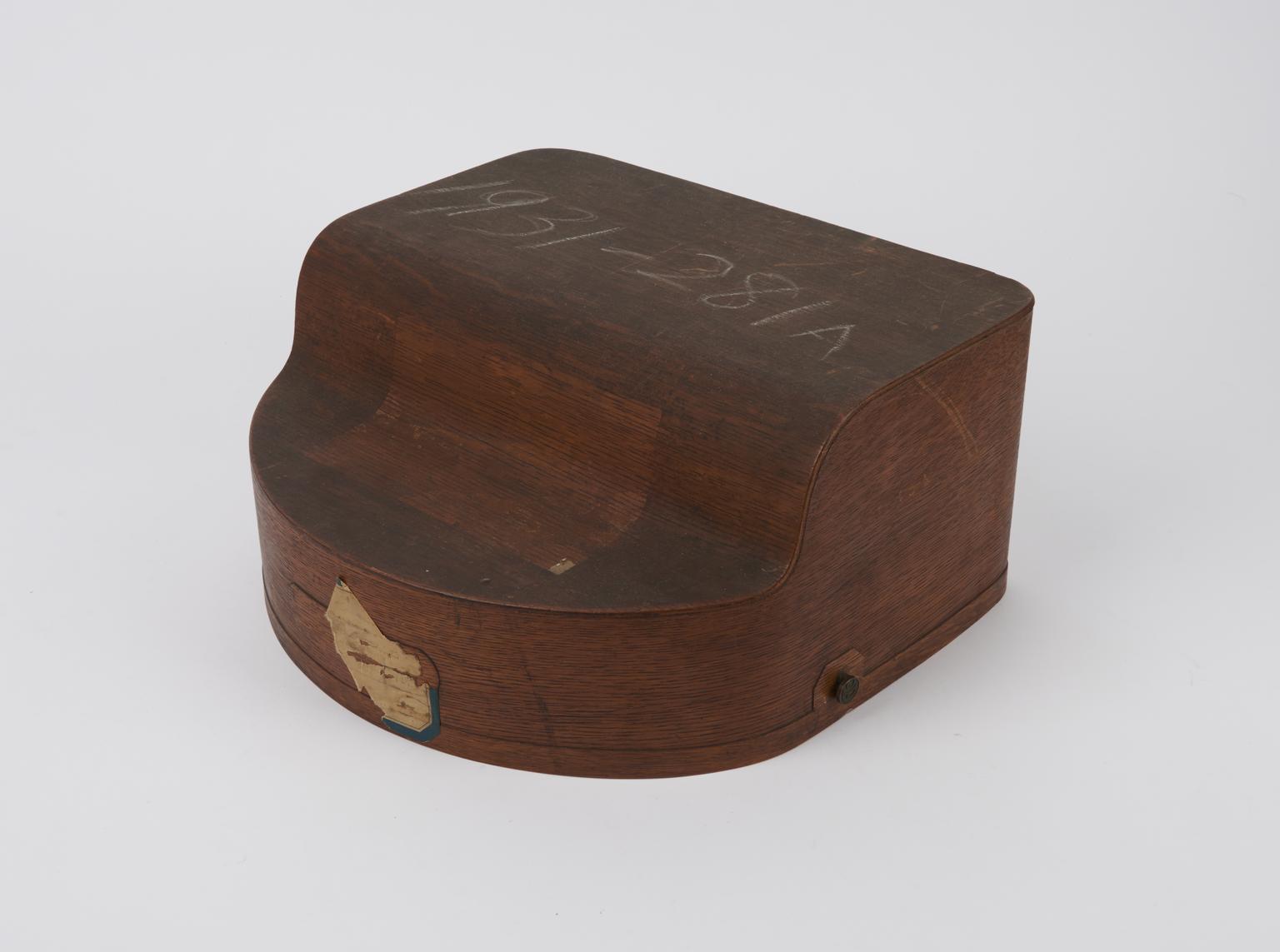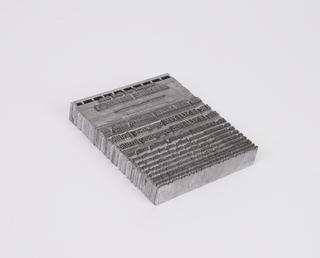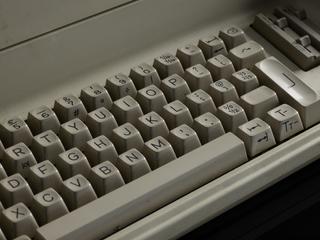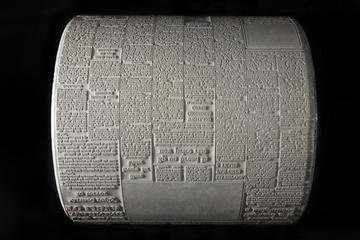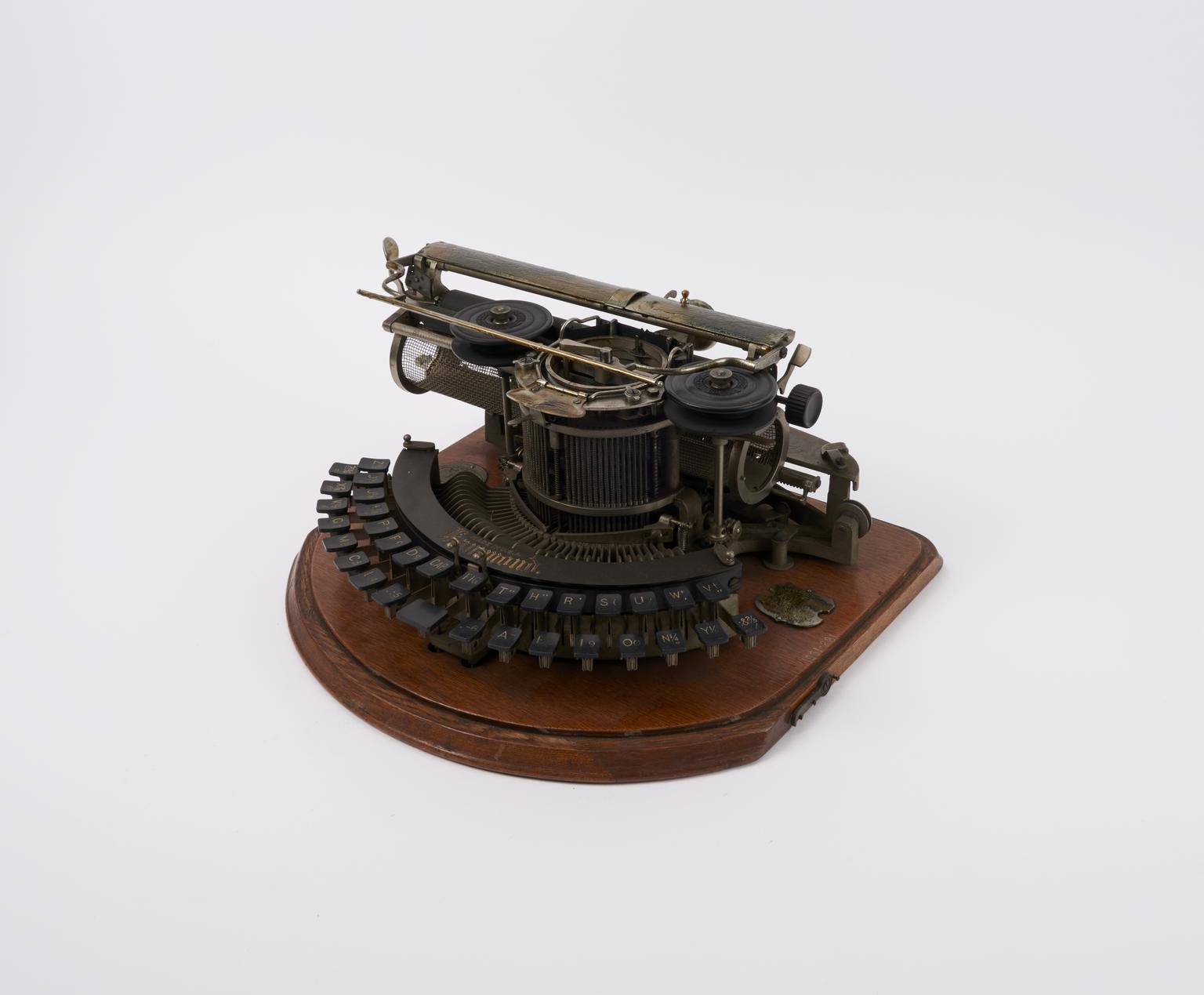
Hammond 'Ideal' Typewriter, 1884
Hammond "Ideal" typewriter, by Hammond Typewriter Company Limited, United Sates, 1884.
More
Hammond 'Ideal' typewriter, 1884. In spite of its curved keyboard, the Hammond was popular because of its print quality and the ease with which the typeface could be changed. It was invented by James Hammond of Boston, Massachusetts in 1880. This is the first commercial model. The type is carried on a pair of interchangeable rotating sectors, one controlled by each half of the keyboard. A small hammer pushes the paper against the ribbon and type sector to print each character. The mechanism was later adapted to give a straight QWERTY keyboard and proportional spacing.
- Materials:
- metal plated (unknown) and wood (unidentified)
- Object Number:
- 1931-281/2/1
- type:
- typewriter
- Image ©
- The Board of Trustees of the Science Museum
